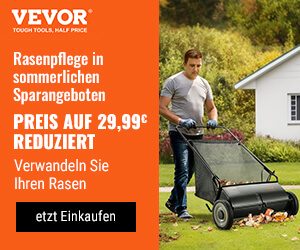When we think about gardening tools, what we want to achieve is to carry out our tasks in the garden in a simpler and faster way. If we have the basic tools, they will help us to make our garden not only look splendid, but also to make the plants grow healthy and vigorous.
Choosing the right tool will depend on the type of garden and its size. The same gardening tools are not required for a large garden with, for example, trees and a large area of land, as for one with only a small patio full of flower pots.
Basic gardening tool kit
1. Gloves
They are very necessary, as they will prevent two things that we do not want to happen: damaging our precious plants and our irreplaceable hands. We want to protect our hands from insects and chemical fertilizers that could cause some kind of allergic reaction.
The gloves we choose must be of very good quality. They are available in many materials and different models. The ideal ones are those made of leather, or any other resistant material, especially if we have to work with roses and thorny plants.
It is advisable to have several types: Strong, corrugated ones are good for handling thorny plants, and soft, porous ones are needed for more delicate plants, since they should not only protect our hands, but also allow us to move them. We can also use cotton, plastic or latex ones.
2. Scissors
The scissors we use must be appropriate, as we could cause damage to the plants if they are not. Choosing special gardening scissors makes the job much easier, whether it is to remove small dry stems or prune branches that grow excessively, both in trees, bushes and palm trees.
This tool is used frequently, so it is essential that we choose one that has sharp and replaceable blades, with which we can apply tension according to the type of plant and its thickness. It is also important to use the ones that best fit our hands.
3. Shovel
If you want to get started in the world of gardening, the gardening spade is an essential tool. If you want to dig without damaging the roots of your plant or make a hole to plant a large plant, the pointed spade is ideal.
The handle of the shovel can be short for manual tasks, or long for working with the help of our feet. The important thing is that it has a good grip, is comfortable and firm when using it.
4. Rake
This tool is designed to help us keep the soil in our garden level. We have two types: with sharp metal tips and plastic ones. The metal one is ideal for removing soil, and the plastic one for collecting dry leaves or grass clippings.
The rake is useful for other functions, for example, we can use it to plow the surface of the land before spreading new soil or planting new grass, its “teeth” are ideal for defining the grooves in which we will place the seeds that we are going to sow.
Using a hose is the simplest method for watering garden plants.
Some specialists recommend that if we have a small garden area, it is better to have a watering can, while others think from their experience that if we have irrigation sprinklers we will avoid using the hose.
However, the hose allows us to water with agility, speed and precision, as it can be adapted to our needs depending on the type of accessory we add to its end. It is appropriate that we always have a hose, even if we have a watering can and sprinklers. In addition, incorporating watering guns to improve the flow and force with which the water comes out of the hose is very useful, and will allow us to reduce water consumption.
6. Drill and pitchfork
These are garden tools that we will use frequently in the garden because they allow us to aerate the soil, a necessary task before sowing the new seeds. They come in different types depending on their size.
If we have a garden with natural grass, then this tool is essential to give the land care and uniformity. But what type of lawnmower should we choose? Everything will depend on our needs, the size and conditions of the garden:
- Manual lawnmower : This is ideal for a small, well-levelled garden. The disadvantage is that you will be the one who will be applying force to the device.
- Electric lawnmower : This is the one that does the work, while we only have to move it. Its disadvantage is that it must be kept plugged in, which means that if the garden is very large, the wiring can be a limitation.
- Gasoline lawnmower : works perfectly even when there are uneven ground and allows us to choose the height at which we will make the cuts.
There are lawnmowers that already have a collection bag, which saves us the work of having to sweep up the grass we cut.
8. Brushcutters
These are tools that make cuts where cutting machines cannot reach, such as corners, the edges of fences and walls, around trees, and near the pool.
9. Blow leaves
This tool allows you to gather leaves from trees to keep the garden clean. In this area, it is important to choose one that perfectly fits our needs, since there are different options on the market.
How to select the right tool?
Taking care of and keeping our garden in perfect condition depends on its size. Although the basic kit is the same, it depends on the size and the amount of details we have, in order to plan in detail the tools we need to maintain them. A small garden with some details and a few decorative plants is not the same as having to take care of a garden with grass, trees, among others.
So the care tools will depend on the amount of work the garden requires.
Always look for safety first
Working to create or care for a garden is a very pleasant task that offers moments of peace, as well as being very rewarding, of course, as long as we do it safely and following the basic rules to achieve it.
Always remember to use the tools you need. Never buy tools that professionals use.
Read the instructions for machines and utensils so that you are aware of the risks, as well as safety suggestions.
Useful tips for using tools
When choosing these tools, it is important to select those that do not deteriorate with use or with water.
After using them, we must keep them clean, removing any residue such as dirt, plants or organic waste. We must also make sure to dry them well, because if we store them wet, they will rust and the parts made of wood or rubber will rot. In particular, we must clean those that have been in contact with chemical residues, otherwise they can deteriorate more quickly.





















